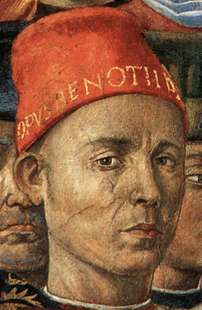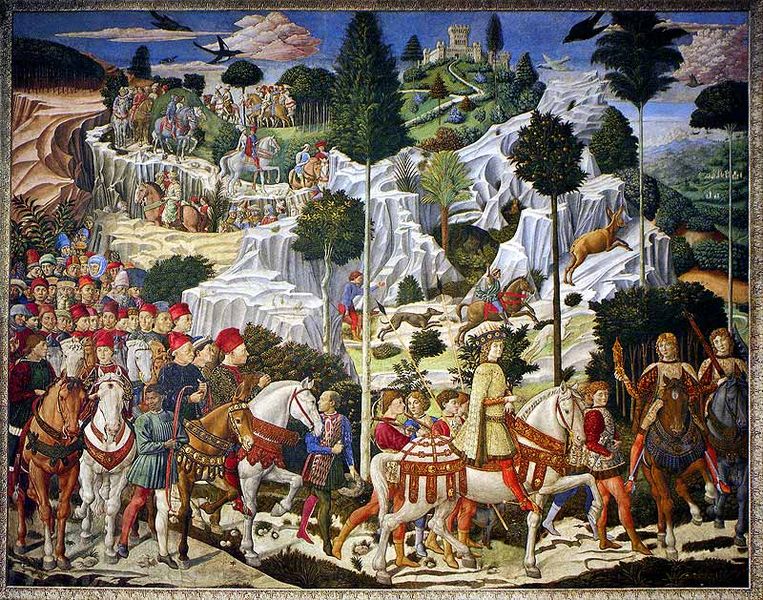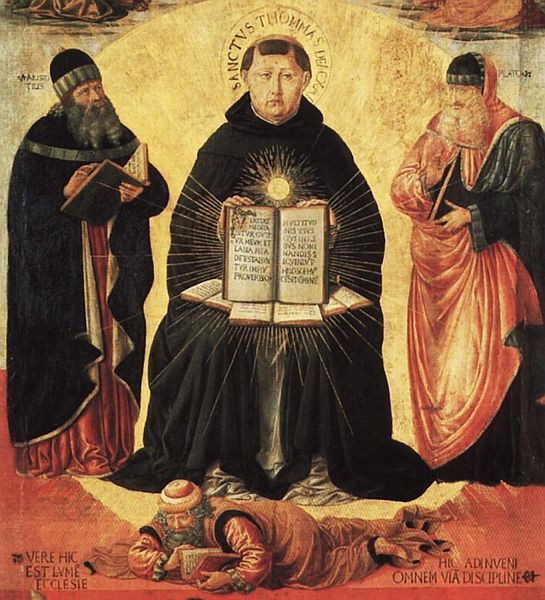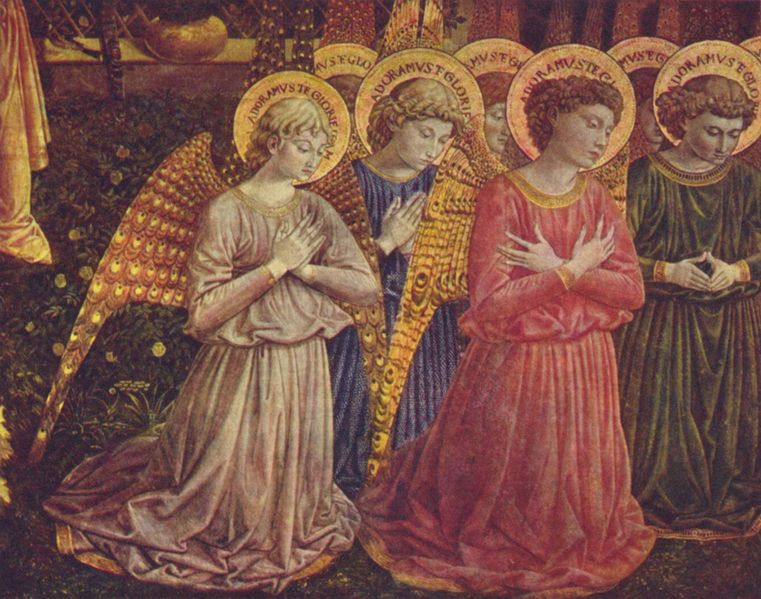Benozzo Gozzoli (1421 – 1497)
Get a Gozzoli Certificate of Authenticity for your painting (COA) for your Gozzoli drawing.
For all your Gozzoli artworks you need a Certificate of Authenticity (COA) in order to sell, to insure or to donate for a tax deduction.
Getting a Gozzoli Certificate of Authenticity (COA) is easy. Just send us photos and dimensions and tell us what you know about the origin or history of your Gozzoli painting or drawing.
If you want to sell your Gozzoli painting or drawing use our selling services. We offer Gozzoli selling help, selling advice, private treaty sales and full brokerage.
We have been authenticating Gozzoli and issuing certificates of authenticity since 2002. We are recognized Gozzoli experts and Gozzoli certified appraisers. We issue COAs and appraisals for all Gozzoli artworks.
Our Gozzoli paintings and drawings authentications are accepted and respected worldwide.
Each COA is backed by in-depth research and analysis authentication reports.
The Gozzoli certificates of authenticity we issue are based on solid, reliable and fully referenced art investigations, authentication research, analytical work and forensic studies.
We are available to examine your Gozzoli painting or drawing anywhere in the world.
You will generally receive your certificates of authenticity and authentication report within two weeks. Some complicated cases with difficult to research Gozzoli paintings or drawings take longer.
Our clients include Gozzoli collectors, investors, tax authorities, insurance adjusters, appraisers, valuers, auctioneers, Federal agencies and many law firms.
We perform Benozzo Gozzoli art authentication. appraisal, certificates of authenticity (COA), analysis, research, scientific tests, full art authentications. We will help you sell your Benozzo Gozzoli or we will sell it for you.

Benozzo Gozzoli was an Italian Renaissance painter from Florence. He is best known for a series of murals in the Palazzo Medici-Riccardi depicting festive, vibrant processions with wonderful attention to detail and a pronounced International Gothic influence on Gozzoli’s art.
He was born Benozzo di Lese in the village of Sant’Ilario a Colombano around 1421, and moved with his family to Florence in 1427. According to Giorgio Vasari, in the early part of his career he was a pupil and assistant of Fra Angelico: some of the works in the convent of San Marco of Florence were executed by Gozzoli from Angelico’s design. In 1444-1447 he collaborated with Lorenzo and Vittorio Ghiberti to the Paradise Door of the Battistero di San Giovanni.

On May 23, 1447 Gozzoli was in Rome with Angelico, called by Pope Eugene IV to the decoration of a chapel in the Vatican Palace. Later the two worked in the Cappellina Nicolina for Nicholas V (until June 1448). From 1449 is a banner with Madonna and Child in the church of Santa Maria sopra Minerva, perhaps designed by Angelico. In Rome he executed also, in Santa Maria in Aracoeli, a fresco of St Anthony and Two Angels. The last collaboration with Angelico is the vault of the Cathedral of Orvieto in Umbria.
In 1449 he left Angelico, and moved to Umbria. From 1450 is an Annunciation in Narni, signed OPU[S] BENOT[I] DE FLORENT[IA]. In the monastery of S. Fortunato, near Montefalco, he painted a Madonna and Child with Saints and Angels, and three other works. One of these, the altar-piece representing St Thomas receiving the Girdle of the Virgin, is now in the Lateran Museum and shows the affinity of Gozzoli’s early style to Angelico’s. He next painted in the monastery of S. Francesco, Montefalco, filling the choir with a triple course of subjects from the life of the saint, with various accessories, including heads of Dante, Petrarch and Giotto. This work was completed in 1452, and is still marked by the style of Angelico, crossed here and there with a more distinctly Giottesque influence. In the same church, in the chapel of Saint Jerome, is a fresco by Gozzoli of the Virgin and Saints, the Crucifixion and other subjects.
He remained at Montefalco (with an interval at Viterbo) probably till 1456, employing Pier Antonio Mezzastris as assistant. Thence he went to Perugia, and painted in a church a Virgin and Saints, now in the local academy, and soon afterwards to his native Florence, the epicenter of Quattrocento art. By the end of 1459, he had nearly finished his important labour in the chapel of the Palazzo Medici-Riccardi, the Journey of the Magi to Bethlehem, and in the tribune, a composition of Angels in Paradise. It is interesting to note that his patron for the Journey of the Magi, Piero di Cosimo de’ Medici, felt some of the seraphim were unsuitable, and wanted them painted over. Although Gozzoli agreed to do this, it was never actually done. His picture in the National Gallery, London, a Virgin and Child with Saints, 1461, belongs also to the period of his Florentine sojourn. Another small picture in the same gallery, the Rape of Helen, is of dubious authenticity.

In 1464 Gozzoli left Florence for S. Gimignano, where he executed some extensive works; in the church of Sant’Agostino, a composition of St. Sebastian protecting the City from the Plague of this same year, 1464; over the entire choir of the church, a triple course of scenes from the legends of St Augustine, from the time of his entering the school of Tegaste on to his burial, seventeen chief subjects, with some accessories; in the Pieve di San Gimignano, the Martyrdom of Sebastian, and other subjects, and some further works in the city and its vicinity. Here his style combined something of Lippo Lippi with its original elements, and he received co-operation from Giusto d’Andrea.
He stayed in this city till 1467, and then began, in the Campo Santo of Pisa, from 1469, the vast series of mural paintings with which his name is specially identified. There are twentyfour subjects from the Old Testament, from the Invention of Wine by Noah to the Visit of the Queen of Sheba to Solomon. He contracted to paint three subjects per year for about ten ducats each–a sum which may be regarded as equivalent to $150.00 in 1911. It appears, however, that this contract was not strictly adhered to, for the actual rate of painting was only three pictures in two years. Perhaps the great multitude of figures and accessories was accepted as a set-off against the slower rate of production.
By January 1470 he had executed the fresco of Noah and his Family, followed by the Curse of Ham, the Building of the Tower of Babel (which contains portraits of Cosimo de’ Medici, the young Lorenzo, Angelo Poliziano and others), the Destruction of Sodom, the Victory of Abraham, the Marriages of Rebecca and of Rachel, the Life of Moses, etc. In the Cappella Ammannati, facing a gate of the Campo Santo, he painted also an Adoration of the Magi, wherein appears a portrait of himself.
All this enormous mass of work, in which Gozzoli was probably assisted by Zanobi Macchiavelli, was performed, in addition to several other pictures during his stay in Pisa (including the Glory of St. Thomas Aquinas, now in the Louvre), in sixteen years, lasting up to 1485. This is the latest date which can with certainty be assigned to any work from his hand. Gozzoli died in Pistoia in 1497, perhaps of a pestilence.

In 1478 the Pisan authorities had given him, as a token of their regard, a tomb in the Campo Santo. He had likewise a house of his own in Pisa, and houses and land in Florence. In rectitude of life he is said to have been worthy of his first master, Fra Angelico.
The art of Gozzoli does not rival that of his greatest contemporaries either in elevation or in strength, but is pre-eminently attractive by its sense of what is rich, winning, lively and abundant in the aspects of men and things. His landscapes, thronged with birds and quadrupeds, especially dogs, are more varied, circumstantial and alluring than those of any predecessor; his compositions are crowded with figures, more characteristically true when happily and gracefully occupied than when the demands of the subject require tragic or dramatic intensity, or turmoil of action; his color is bright, vivacious and festive. Gozzoli’s genius was, on the whole, more versatile and assimilative than vigorously original; his drawing not free from considerable imperfections, especially in the extremities and articulations, and in the perspective of his gorgeously-schemed buildings. In fresco-painting he used the methods of tempera, and the decay of his works has been severe in proportion. Of his untiring industry the recital of his labors and the number of works produced are the most forcible attestation.

Still wondering about a 15th century Italian painting in your family collection? Contact us…it could be by Benozzo Gozzoli.
Reviews
1,217 global ratings
5 Star
4 Star
3 Star
2 Star
1 Star
Your evaluation is very important to us. Thank you.
